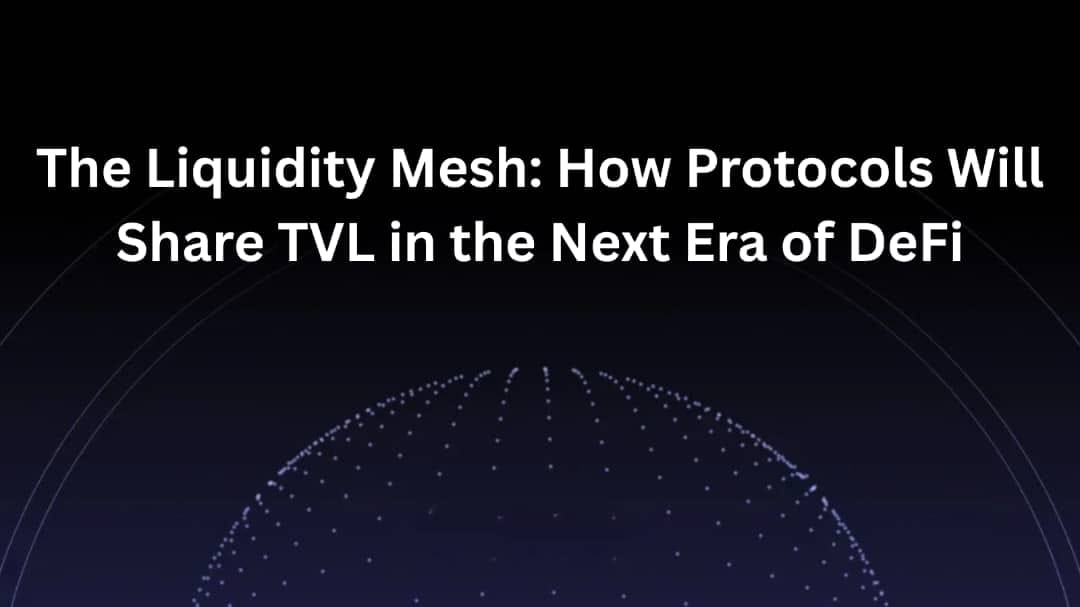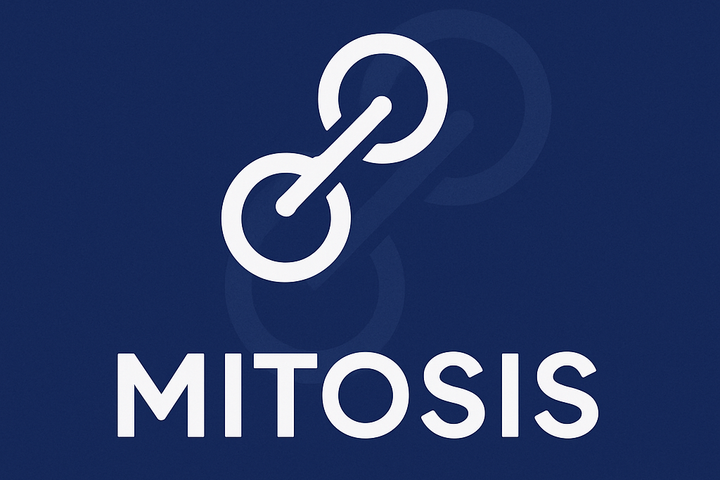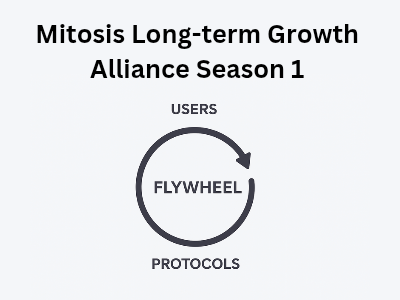The Liquidity Mesh: How Protocols Will Share TVL in the Next Era of DeFi

Introduction
The decentralized finance (DeFi) landscape has evolved rapidly over the past few years, with innovations that have transformed traditional financial systems into programmable, decentralized alternatives. One of the most significant challenges in this space has been the issue of liquidity. Traditionally, liquidity has been siloed within individual protocols, leading to inefficiencies and fragmentation. However, the emergence of the "Liquidity Mesh" concept promises to revolutionize how liquidity is shared across protocols, enabling a more interconnected and efficient DeFi ecosystem.
In this article, we will explore the concept of the Liquidity Mesh, its implications for total value locked (TVL) in DeFi, and how protocols can collaborate to create a more fluid and automated liquidity environment. We will also provide resources and links to further explore this topic.
1. Understanding Total Value Locked (TVL)
Total Value Locked (TVL) is a key metric in the DeFi space, representing the total amount of assets staked or locked in a particular protocol. TVL is often used as an indicator of a protocol's popularity and health. As of October 2023, the DeFi ecosystem has seen TVL reach unprecedented heights, with billions of dollars locked across various platforms. However, this growth has also highlighted the challenges of liquidity fragmentation.
1.1 The Fragmentation of Liquidity
In the current DeFi landscape, liquidity is often fragmented across multiple protocols. For example, a user may need to navigate through various decentralized exchanges (DEXs) to find the best price for a token swap, leading to inefficiencies and increased transaction costs. This fragmentation can also result in lower capital efficiency, as liquidity providers may not be able to optimize their returns across different platforms.
2. The Concept of the Liquidity Mesh
The Liquidity Mesh is a paradigm shift in how liquidity is managed and shared across DeFi protocols. It envisions a future where liquidity is not confined to individual platforms but is instead interconnected, allowing for seamless movement of assets across different layers and protocols. This interconnectedness can be achieved through programmable smart contracts, automated market makers (AMMs), and cross-chain solutions.
2.1 Key Features of the Liquidity Mesh
- Programmable Liquidity: The Liquidity Mesh allows for the creation of programmable liquidity pools that can adapt to market conditions. This means that liquidity can be dynamically allocated based on demand, optimizing returns for liquidity providers.
- Shared Liquidity Pools: Instead of siloed liquidity, protocols can share liquidity pools, enabling users to access a larger pool of assets. This can lead to better pricing and reduced slippage for traders.
- Automated Cross-Protocol Interactions: The Liquidity Mesh facilitates automated interactions between different protocols, allowing for seamless asset transfers and swaps without the need for manual intervention.
- Interoperability: By leveraging cross-chain solutions, the Liquidity Mesh can connect different blockchain networks, enabling liquidity to flow freely across ecosystems.
3. The Benefits of the Liquidity Mesh
The adoption of the Liquidity Mesh concept can bring several benefits to the DeFi ecosystem:
1. Increased Capital Efficiency
By sharing liquidity across protocols, the Liquidity Mesh can significantly increase capital efficiency. Liquidity providers can earn yields from multiple sources, while traders can access deeper liquidity pools, resulting in better prices and reduced slippage.
2. Enhanced User Experience
The Liquidity Mesh can simplify the user experience by reducing the need to navigate multiple platforms. Users can access a wide range of assets and services from a single interface, making DeFi more accessible to a broader audience.
3. Improved Market Stability
With a more interconnected liquidity environment, the Liquidity Mesh can help stabilize markets by reducing the impact of large trades on individual protocols. This can lead to a more resilient DeFi ecosystem, less prone to volatility.
4. Innovation and Collaboration
The Liquidity Mesh encourages collaboration between protocols, fostering innovation and the development of new financial products. As protocols work together to create shared liquidity solutions, the DeFi landscape will continue to evolve and expand.
4. Implementing the Liquidity Mesh
To realize the vision of the Liquidity Mesh, several key components need to be developed and implemented:
1. Standardized Protocols
For the Liquidity Mesh to function effectively, standardized protocols for liquidity sharing and asset transfers must be established. This includes creating common interfaces and APIs that allow different protocols to interact seamlessly.
2. Cross-Chain Solutions
Interoperability is crucial for the Liquidity Mesh. Cross-chain solutions, such as bridges and wrapped assets, will enable liquidity to flow between different blockchain networks, expanding the reach of DeFi protocols.
3. Advanced Smart Contracts
Programmable liquidity pools will require advanced smart contracts that can automatically adjust to market conditions. These contracts should be able to manage liquidity allocation, pricing, and risk management in real-time.
4. Governance and Incentives
Decentralized governance models will play a vital role in the Liquidity Mesh. Protocols will need to establish governance frameworks that incentivize collaboration and ensure fair distribution of rewards among liquidity providers.
5. Case Studies: Protocols Embracing the Liquidity Mesh
Several DeFi protocols are already exploring the concept of the Liquidity Mesh and implementing features that align with this vision:
1. Uniswap V3
Uniswap V3 introduced concentrated liquidity, allowing liquidity providers to allocate their capital more efficiently. This feature enables liquidity to be concentrated in specific price ranges, improving capital efficiency and reducing slippage for traders.
2. Aave
Aave has implemented a liquidity pool model that allows users to borrow and lend assets across different protocols. By integrating with other DeFi platforms, Aave is creating a more interconnected liquidity environment.
3. SushiSwap
SushiSwap has embraced the concept of shared liquidity through its Kashi lending platform, which allows users to create isolated lending markets. This enables liquidity to be shared across different assets while maintaining risk management.
4. Yearn Finance
Yearn Finance is known for its yield optimization strategies, which automatically allocate user funds to the most profitable DeFi protocols. By leveraging the Liquidity Mesh, Yearn can enhance its yield strategies and provide users with better returns.
6. Challenges and Considerations
While the Liquidity Mesh presents exciting opportunities, several challenges must be addressed:
1. Security Risks
As liquidity becomes more interconnected, the risk of smart contract vulnerabilities and exploits increases. Protocols must prioritize security audits and implement robust risk management practices.
2. Regulatory Compliance
The evolving regulatory landscape poses challenges for DeFi protocols. As liquidity sharing becomes more prevalent, protocols must navigate compliance requirements to ensure they operate within legal frameworks.
3. User Education
The complexity of the Liquidity Mesh may be daunting for new users. Education and user-friendly interfaces will be essential to ensure that users can navigate the interconnected DeFi landscape effectively.
Conclusion
The Liquidity Mesh represents a transformative shift in the DeFi ecosystem, enabling protocols to share liquidity in a programmable, automated, and interconnected manner. By breaking down the silos of liquidity, the Liquidity Mesh can enhance capital efficiency, improve user experiences, and foster innovation across the DeFi landscape.
As we move into this new era of DeFi, it is crucial for protocols to collaborate, establish standardized practices, and prioritize security and compliance. The future of DeFi is bright, and the Liquidity Mesh will play a pivotal role in shaping its evolution.
Resources for Further Exploration
- DeFi Pulse - A comprehensive resource for tracking TVL in DeFi protocols.
- Messari - A platform providing insights and research on the DeFi ecosystem.
- CoinGecko - A cryptocurrency data aggregator that includes DeFi metrics.
- The Block - A news and research platform focused on blockchain and cryptocurrency.
- Ethereum Foundation - The official website for Ethereum, the leading platform for DeFi protocols.



Comments ()